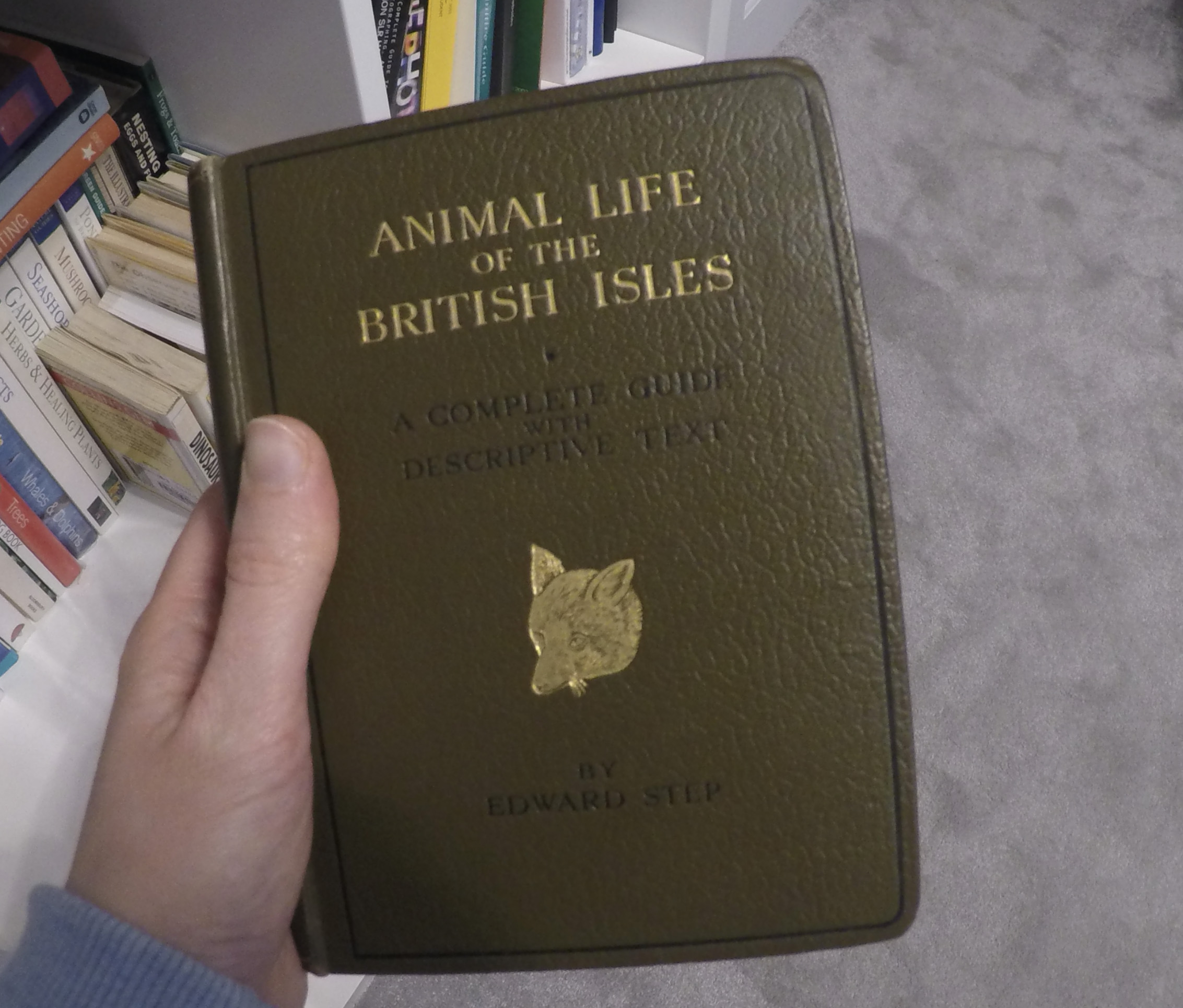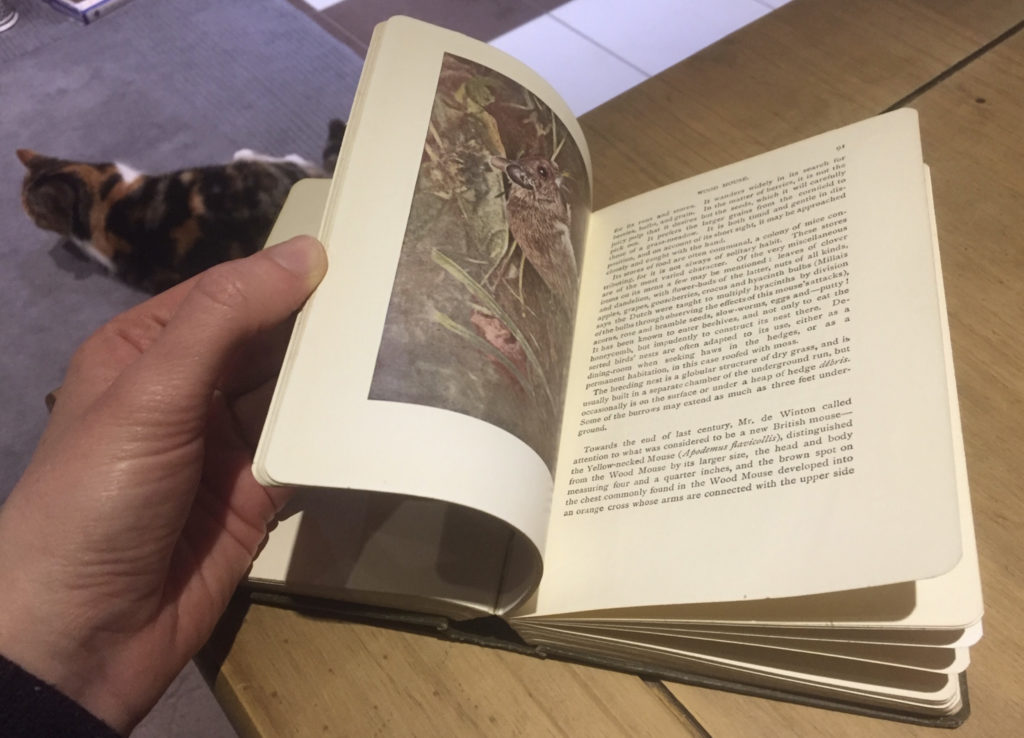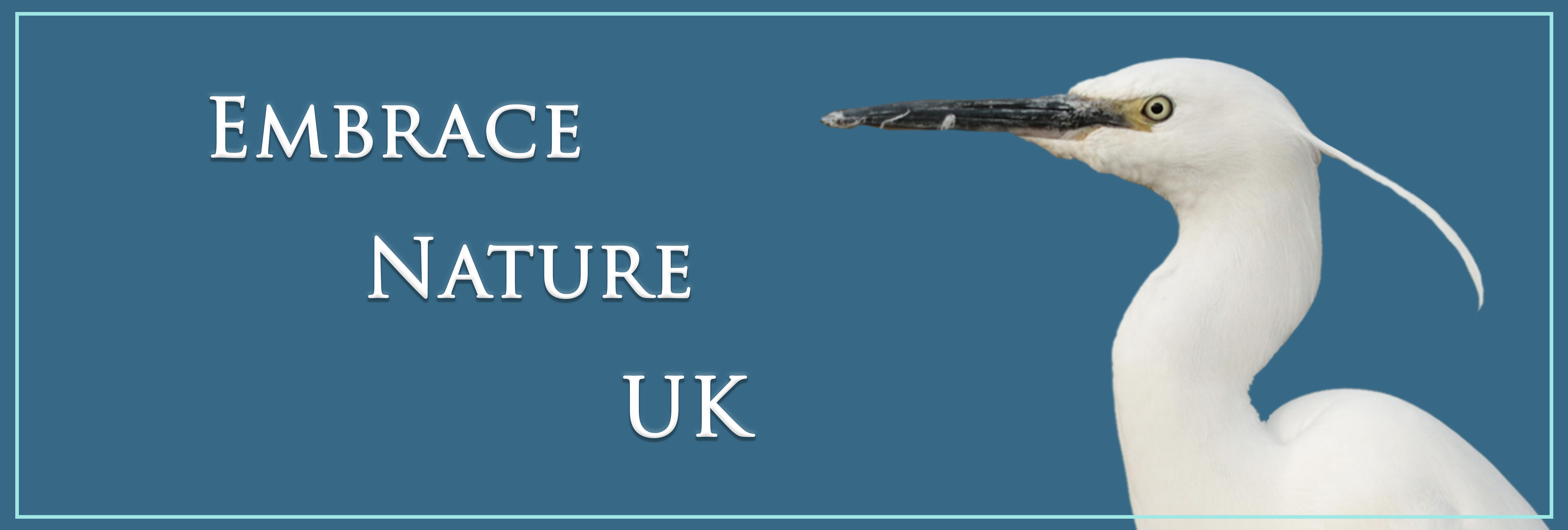
When we speak of old, smelly, attractive and thoroughly entertaining books, a great example is Edward Step’s “Animal Life of the British Isles”. This is a book I hadn’t heard of before but I felt drawn to it once I read just a few snippets. It shows drawings of animal’s skeletons, which is something we don’t currently have in our bookcase and it’s complete with interesting photographs with creative text.
“When we speak of old, smelly, attractive and thoroughly entertaining books…”
The book provides a very visual description of the creatures it discusses: “The few wayfarers who may be hurrying along that road, looking for possible shelter from the pitiless rain, and seeing the Frogs hopping along much as the raindrops bounce, are quite prepared to declare that they came down from the clouds with the rain.”
This book also provides inaccuracies that are humorous to read and give a good bearing on public opinion at that time. The following an example of this in regards to the hedgehog: “He is said to be capable of killing and eating a wild Rabbit ; but, of course, although he runs well, he could never catch a Rabbit unless the rodent were wounded. He is also a good swimmer and climber, not only of trees but of rain-pipes and rough walls, especially where these are creeper-clad.” Sentences such as this is what drew us to this book as it would probably serve well as an entertaining read and a great game to test our knowledge by ‘spotting the facts’.
“Its usefulness is not to be underestimated though as we get so used to our current day state of affairs, it can be easy to forget or be ignorant of how we got here.”
Its usefulness is not to be underestimated though as we get so used to our current day state of affairs, it can be easy to forget or be ignorant of how we got here. For a book initially published in 1921, which in the whole scheme of things is not that long ago, the truth that comes from it is all too shocking: “In some places in the London district a light grey Squirrel may be seen, and thought to be a colour variation of our native species. It is really an American visitor, distinct in colour and without tufts to the ears. Some years ago the caged specimens in the Zoological Gardens, Regent’s Park, had become so numerous that some of them were given their liberty.”
The book speaks of the spread of these grey squirrels from the garden to the park and onto “wooded grounds of suburban residences”. Edward Step’s prediction that “British naturalists of a not-distant future will probably have to include two species of Squirrels in their lists” does not even remotely begin to cover the extent of the problem that has arisen from this initial release.

Own your own copy of Edward Step’s “Animal Life of the British Isles”

